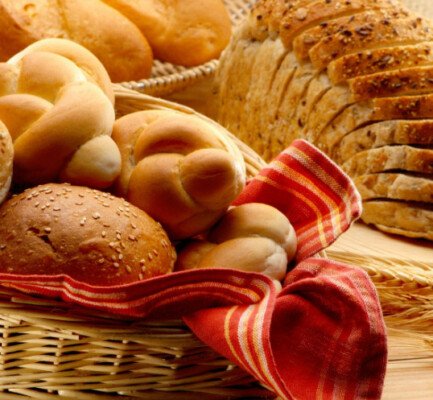|
Getting your Trinity Audio player ready...
|
When it comes to baked goods, bread and rolls are two popular choices that grace our tables. While they both fall under the category of baked dough, bread and rolls have distinct characteristics that set them apart. In this article, we’ll explore the key differences between bread and rolls, from their ingredients and preparation to their various types and uses.

Ingredients and Composition
Bread and rolls share a common foundation of flour, water, yeast, and salt. However, their ratios and additional ingredients lead to notable variations in texture and taste.
Bread
Bread dough typically contains a higher proportion of flour to liquid, resulting in a denser and more substantial texture. The mixing process for bread often involves longer kneading and fermentation times, allowing for the development of gluten strands. This results in a chewy interior and a thicker crust.
Rolls
Rolls, on the other hand, have a slightly higher moisture content and may include additional ingredients such as eggs, butter, milk, or sweeteners. This leads to a softer and more tender texture compared to bread. The shorter mixing and rising times for roll dough result in a less developed gluten structure, yielding a lighter and fluffier product.
Shape and Size
The most evident difference between bread and rolls lies in their shape and size.
Bread
Bread typically takes the form of a larger loaf with a rectangular or oval shape. It is designed for slicing into individual portions, making it suitable for sandwiches, toasting, or enjoying with spreads.
Rolls:
Rolls, on the other hand, are smaller individual portions that can vary in shape, including round, oval, or crescent. They are often served as accompaniments to meals, offering convenient single-serving options.
Preparation Techniques
The techniques used to prepare bread and rolls differ, influencing their final characteristics.
Bread:
The preparation of bread involves a more intricate process. The dough is kneaded to develop gluten, followed by a series of rising and shaping stages. The longer fermentation times contribute to the development of complex flavours.
Rolls:
Rolls are typically prepared through shorter mixing and rising times. The dough may undergo minimal kneading, resulting in a more delicate texture. This quicker process allows for a quicker turnaround and is well-suited for small, individual servings.
Types and Varieties
Both bread and rolls encompass a wide range of types and varieties, each catering to different preferences and culinary uses.
Bread:
Bread comes in various forms, including baguettes, boules, batards, and sliced sandwich loaves. Different types of bread offer varying flavours, textures, and crust characteristics, making them suitable for diverse applications.
Rolls:
Rolls also offer a diverse array of options, such as dinner rolls, hamburger buns, crescent rolls, and sweet rolls. The variety of rolls available ensures that there’s a perfect match for every occasion, from formal dinners to casual gatherings.
Culinary Uses
The distinction between bread and rolls extends to their culinary applications.
Bread:
Bread is a versatile staple that serves as the foundation for sandwiches, toast, and hearty dishes like French toast or bread pudding. Its larger size makes it well-suited for sharing among multiple people.
Rolls:
Rolls are often enjoyed as side dishes or accompaniments to meals. They complement soups, stews, salads, and grilled items. Rolls are also popular for creating sliders and mini sandwiches.
Conclusion
While bread and rolls both originate from the same basic ingredients, their unique characteristics and preparation methods result in distinct final products. Bread boasts a hearty and chewy texture, ideal for sandwiches and toasting, while rolls offer a softer and lighter consistency, perfect for accompanying meals or creating bite-sized treats. Understanding the differences between these baked goods allows us to appreciate the diverse options they bring to our tables and the various ways they enhance our dining experiences.


